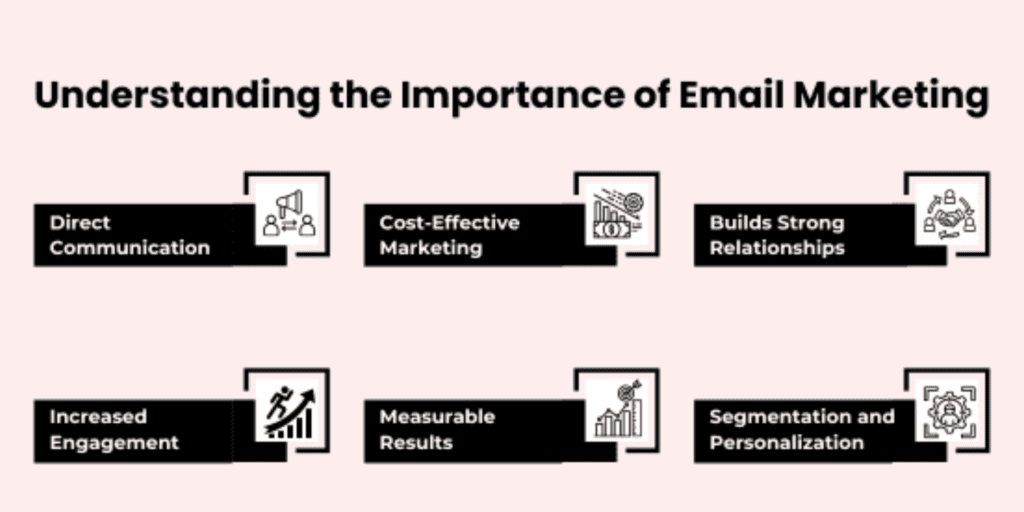Email Marketing Hacks to Boost Conversions

Email marketing Boost Conversions has turned out to be one of the most effective and cost-effective means of reaching target audiences by businesses in the fairly evolving environment of digital marketing today. It stands different from the social media platforms where algorithms decide whose viewing and when, and directly lands in a subscriber’s inbox. Email marketing remains one of the most direct and personalized channels through which one can communicate with subscribers. A well-planned email marketing campaign can help a business in creating strong customer relationships that can induce lead nurturance and eventually lead to conversion.
Being at the very heart of digital marketing, email marketing is totally different from other modes. Here are the benefits: Boost Conversions

Higher Returns: Research shows that for every $1 spent in email marketing, businesses average $42 in return, which is why it is one of the best returns for investment ever seen from marketing channels.
Highly Personalized: Advertising through email can never reach the levels of personalization and segmentation available. The emails catch their target with the highly personalized content that depends on the person’s behavior, preferences, and demographics.
Direct Interaction: There is complete control over audience engagement with email marketing since the medium is owned by business. The other media of engagement such as social media or paid advertisements depend on third-party algorithms to obtain audience engagement using it.
Automation: Message delivery, from welcome messages to abandoned cart and recommendations for products based on past behavior, it offers the company an opportunity to send out worthwhile and timely messages.
Scale: Email marketing can be scaled according to the size of the entity. It can reach huge numbers of people at once, whether it is a small business startup or a multinational corporation.
Email Marketing Conversion Rate Statistics.
“Boost conversions with powerful email marketing hacks—optimize subject lines, automation, and A/B testing for success!”
Boost Conversions : Email Marketing Conversion Rate Statistics

Yet numbers do not lie, and email marketing statistics vindicate its logic:
Generally, email marketing Boost Conversions may have an average percentage between 2 and 5%, depending on the industry and strategy.
82% of marketers use email marketing as a major strategy for customer retention.
99% of the email users check their inbox on a daily basis, and some of them even do it multiple times every day.
Transactional emails (eg order confirmation and follow-up) have an open rate of 80 to 85%, which means they provide a great opportunity for further engagement.
Personalized subject lines increase open rates by 26%, the power of customization.
Allure with Subject Lines
A subject line is the first entry for your email into a subscriber’s inbox. It is, by no means, the last word in determining how effective your email will be: if your subject isn’t tantalizing enough, even your best work will not breach the audience’s barrier. Indeed, so strong is the receivers’ attachment to the subject lines that another 47% open mail based solely on the strength of the subject line; 69% of emails are flagged as spam because of weak subject lines.
Why Subject Lines Are Important in Boost Conversions.

Open Soaring With: A good subject line can increase the open rates of an email to bring more people into contact with your message.
Create Urgency and Curiosity: A good subject line makes the recipient’s interest piqued in more particulars that would encourage the opening of an email.
Set the Tone: It will set the mood for subscribers as to what will be in the email that makes them curious enough to open it.
Boost Conversions Subject Line Writing Tips
1. Keep It Short and Sweet : Boost Conversions
Most people open their emails from a mobile device. Subject lines get cut off after about 30-40 characters. To promote visibility:
Keep subject lines to under 50 characters for maximum visibility.
Leave out unnecessary filler words-get right to the point.
2. Personalization Increases Engagement: Boost Conversions
People are more likely to open an email when it feels like it was personally written for them. Personalizing an email by addressing the recipient by name or referring to the recipient’s past behavior makes the email relevant.
3. Generate Urgency & FOMO (Fear of Missing Out)
By generating a sense of urgency, you allow the subscriber to feel the need to act right away, thereby improving open rates and conversions.
4. Create Curiosity
A subject line that hints at details but does not reveal it all will only make the recipients even more curious.
5. Make Numbers Plus Emojis Possible to Have Better Visibility
Numbers help to set expectations, and emojis create the visibility required to stand out in the midst of crowded inboxes.
6. A/B Test Your Subject Lines
Not all subject lines would work for every audience. A/B Testing (sending two different subject lines to a sample group) gives you what works best.
Personalization and Segmentation: The Inside Scoop for Greater Engagement
To an email marketer, ’emailing’ doesn’t mean sending messages from the computer; it is sending the right message at the right time to the right person. That is personalized emails and segmentation. Use personal, demographic, and behavioral data to tailor-make emails and witness a wonderful increase in engagement as well as conversions.
Importance of Personalization and Segmentation
Increased Open Rates: Personalized email subject lines result in a 26% higher open rate than that of the generic ones.
Higher Click rates(CTR): Personalized emails can increase CTR by as high as 139%.
Improved Conversions: The relevance of an email to the individual will lead the customer to a higher likelihood of taking action.
Reduced Unsubscribes: Sending impersonal copies usually inclines to spammy feelings leading to an increased number of unsubscribes; though well personalized content keeps your audience watching.
What is Boost Conversions Email Segmentation?
Segmentation can be defined as creating small groups from the whole email list and sending relevant content to each of the groups as specified by certain criteria. This means that instead of shooting the same mail address to everyone, segmentation has made targeted messaging possible.

Types of Email Segmentation
1. Demographic Segmentation
Based On: Age; gender; geographical region; job title; income level; etc.
For Instance
A clothing brand can send men’s and women’s different promotions according to shopping preferences.
2. Behavioral Segmentation
Based On: Actions taken by the user for example, previous purchases, visiting the website, interaction with email, etc. cart abandonment
For Instance:
An e-commerce store would send a customer who abandoned shopping a discount email.
A SaaS company can recommend features based on how a user has used the product.
C. Purchase History Segmentation
Partial basis for: Previous purchases; spending habits; frequency of buying.
How Personalized Boost Conversions Emails Maximize Impact
Personalized emails are not just about putting a subscriber’s first name at the top of the email. It is also a way to make it feel as if it is tailored according to needs or preference.

Boost Conversions : Personalization Methodologies
1. Individualized Subject Lines
Not “See our latest sale!”
“Emma, your private discount of 20% is still waiting!”
Not “New stuff you can’t miss out on!”
2. Dynamic User Preference Content
Dynamic content should change according to the behavior of that user.
For instance, a travel agency may send a different vacation destination offer to a user who checks “beach”, “mountains” and “city breaks”.
3. Recommendations Personalized to Consumer
Amazon does this so perfectly that it recommends some products on account of prior purchases and browsing history.
Tools for Personalization & Segmentation: Boost Conversions
For implementing these strategies, email marketing automation tools are necessary that allow segmentation and personalization.

Most Personalized Email Marketing Tools
Klaviyo – The best for e-commerce segmentation and automation.
HubSpot – Best for personalized workflows and lead-nurturing.
Mailchimp – A beginner-friendly tool with easy personalization functions.
ActiveCampaign – Advanced automation and dynamic email content.
Mobile Optimization Best Practices
With over 60% of emails opened on mobile devices, ensuring your emails are mobile-friendly is crucial for engagement and conversions

High Converting Email Copy Strategies
1. The Ability to Compel
The first line should command attention and lift the reader to find out more.
For example, “Struggling To Boost Sales? Here Is The Answer!”
2. Keep It Short & Scannable
Use small paragraphs, bullet points, and space to avoid clutter and improve readability.
Do not write long paragraphs that might simply overwhelm your audience.
3. Use Conversational Language And Personalize
Write as if you were talking to a friend.
Example: “Hey Sarah, we know that you are into skincare; that’s why we picked these for you!”
4. Stress Benefit Rather Than Feature
“Our shoes have memory foam insoles” should instead be put forth as “Enjoy all-day comfort with our memory foam insoles”;
The Best Practices for Optimizing Emails for Mobile
Mobile optimization creates an incredible opportunity for engagement and conversions since over 60% of emails are opened on mobile devices.

Important Insights to Optimize Mobile
1. Use Responsive Email Designs
Make sure e-mails are able to adjust depending on the screen sizes.
Single-column layouts are more readable.
2. Keep Subject Line Short
Heavily aim at 30-40 characters so that truncation is avoided in mobile screens.
3. Use Readable Fonts
14-16px for Body.
22-24px for Headings.
Really small font or decorations should be really avoided.
4. Optimize images and load speed
Image compression helps load time.
Provide ALT content for images in case the image doesn’t load.
5. Make CTA Buttons Finger Friendly
Make the button at least 44x44px for easy tapping.
Elevate your Engagement through Automation
Email automation has made it convenient for businesses to send scheduled, relevant and personalized messages to customers without manual effort. Using automated workflows, now you can nurture leads, re-engage dormant subscribers, and increase conversion rates.
The importance of Email Automation

Saves Time & Increases Efficiency- No manual follow-up is needed.
Improves Engagement- Exactly the right message to the right person based on what they have done.
Improves Conversions – Automated emails generate 320% more revenue than non-automated ones.
Automated Emails to Engage More Customers
1. Welcome Email Series
Trigger: When a subscriber is brand new.
Aim: To introduce the brand, communicate expectations, and create some incentive.
2. Abandoned Cart Emails
Trigger: When the user has not gone through with the purchase of items left in his cart.
Aim: To encourage them to complete the purchase and give them an incentive.
3. Re-Engagement Emails
Trigger: When a subscriber hasn’t engaged for a while.
Aim: To reactivate such users with special offers.
4. Post-Purchase Follow-Up
Trigger: Every time a customer places an order.
Aim: To thank buyers, encourage them to do reviews, or suggest alternative products.
5. Birthday and Anniversary Emails
Trigger: Subscriber’s birthday and anniversary of sign-up.
Aim: To build loyalty by offering personalization
Best Practices for Effective Email Automation
Personalization–Include your subscriber’s name and personalize the content according to actual behavior.
Audience Segmentation–Make sure that automated emails correspond to user preferences and actions.
Timing Optimization–Send the emails when they are most likely to get engagement (morning versus evening).
How to Analyze Email Performance
Making use of email analytics to gain insight on some key performance metrics that will be used to optimize the future campaigns.

Key Metrics to Measure Related to Email
Open Rate – the percentage of individuals who opened the email.
Click Through Rate (CTR) – the percentage of individuals who clicked on a link.
Conversion Rate – Percentage of users who have performed the desired action (e.g., buy product, register for newsletters).
Bounce Rate – percentage of emails that got bounced.
Unsubscribe Rate – Percentage of users who opted out from your emails.
Best Practices for A/B Testing and Analytics : Boost Conversions
Test once, but with only one variable at a time: this is just for isolating the factor responsible for the impact.
Sample size: 10-20% of mailing list data should be used for tests.
Analyze and Implement – You must then analyze the result and utilize that information to improve upon your future campaigns.
The process goes on. A/B testing is continuous, not one-time testing.
The Best Time to Send Emails for Maximum Engagement
When you send emails might dictate how much attention people pay to them. You can expect tremendous open rates, click-through, and conversions by sending out those emails when your audience is most likely active.

When Are the Best Times to Send Emails?
Best Days: Studies have shown that these days typically experience the most engagement: Tuesday, Wednesday, and Thursday.
Best Time Slots:
8 AM – 10 AM – Check your messages in the morning.
12 PM – 2 PM – On lunchtime, browsing.
5 PM – 7 PM – Most active hours are after work.
Ctrl + Avoid Mondays: busy start of the week and towards the weekends: low engagement except for certain industries.
What Influences Email Timing
B2B emails are more likely to have a high level of performance during weekdays as compared to eCommerce, which is more likely to work on the weekends.
Understand when your audience is most likely to engage with the email by interpreting open rates from previous communications.
Time Zone Scheduling – Schedule based on where your audience is located in maximized impact.
Avoiding Spam Filters and Increasing Deliverability
Spam filters do hinder the ability of users to receive legitimate emails, and so deliverability must be optimized in terms of mail marketing. Such optimization is mandatory, as local Internet Service Providers (ISPs) impose stringent spam filters.
Ways to Bypass the Spam Filters:
1.Choose a Recognizable Sender Name and Email
Do not use generic email names such as no-reply@yourcompany.com.
Real sender names should be used (like Emma from Glow Haven).
2. Avoid Spammy Words and Phrases
Words like “FREE!!!”, “Make Money Fast”, and “Exclusive Deal” are blatant red flags to spam filters.
Try to keep the subject as clear and natural as possible.
3. Authenticate Your Emails
SPF, DKIM, and DMARC records all need to be set up in the best way possible in order to authenticate your email.
This will ensure that your email never gets flagged as spam or a phishing attempt.
4. Ask Subscribers to Whitelist Your Emails
Encourage users to add you to their address book.
This will only help improve your inbox placement.
5. Optimize Your Text-to-Image Ratio
Do not send image-only emails. Spam filters consider these to be suspicious.
Maintain a healthy balance of both text and images (minimum 60% text).
6. Use a Clean and Engaged Email List
Remove inactive subscribers to help maintain a healthy sender reputation.
Never use bought lists, these usually include spam traps.
7. Use an Easy Way to Unsubscribe
Do everything possible to allow recipients to opt out instead of sending complaints against you for spamming.
8. Monitor Your Email Deliverability Metrics
Check your bounce, spam, and opening rates to detect issues early.
Conclusion in Boost Conversions
Most powerful tools become email marketing when done properly. Businesses can enjoy massive returns by using the following features in their email campaigns: using straightforward subject lines, personalizing emails, automatically sending emails, and optimizing techniques during disengagement. Long-term success will come from constantly testing, analyzing performance and trends. Implement these hacks today to realize large-scale improvements in email marketing support!



